Flare Star Near WASP-1
Links internal to this web page
Introduction
Observers
Analysis of flare event of 2007.10.15
Non-flare observations
Finder chart
Introduction
This web page displays lifht curves for the newly-discovered "flare
star" located close to exoplaent WASP-1. It has the GSC designation
02265:00068.
The flare star coordinates are 00:21:12.40 +32:01:41.5. It is
estimated to have the following magnitudes (based on J = 10.414, K=
9.705): B = 13.5, V = 12.4, R = 11.8, I = 11.26, B-V = 1.13, J-K =
0.709. The star is very red, and if it's on the main sequence it would
have a spectral type of about M1 (based on the J-K color). This is a
typical spectral type for flare stars.
There's nothing in the x-ray or radio source catalogs at this star's location.
The flare star's behavior was first noted by Bruce Gary (GBL) who
notified Cindy Foote to check her LC (since she observed the same
WASP-1 transit). Cindy found the flare star with the same behavior as
GBL. Cindy notified two others who she knew had observed the same
WASP-1 transit and both of them also found the same flare star
behavior. It is fortuitous that four observers were monitoring
exoplanet WASP-1 on 2007.10.15 when the nearby star
flared, so there is no doubt that the star really flared, given that
all four light curves for the flare star show the flare
occurring at the same time, with the same brightening and same decay
shape.
Observations by two observers at other times than the flare event show
no flare feature or other activity. So far this star has been observed
for a total of 26 hours and only one flare has been observed.
Observers
Cindy Foote (FCN), Utah, 24-inch
James Carlisle (CJH), California, 14-inch
Thomas Smith (STHO), New Mexico, 14-inch
Bruce Gary, (GBL), Arizona, 14-inch
Edwin Sheridan (SEE), Utah, 14-inch
ANALYSIS OF FLARE EVENT OF 2007.10.15
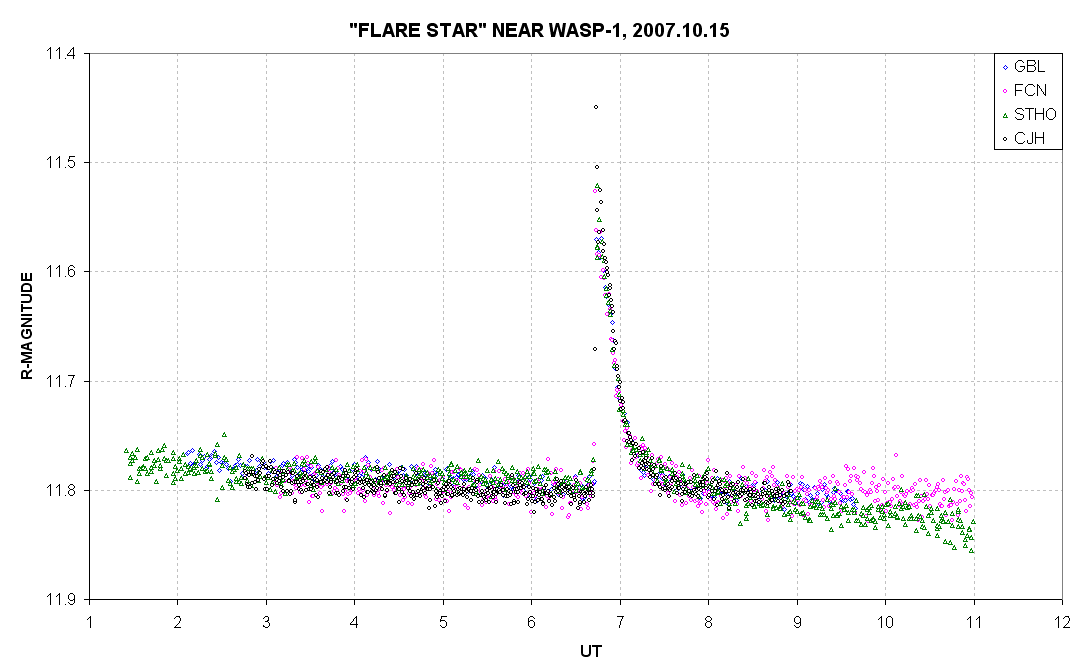
All 4 LC observations for the flare event.
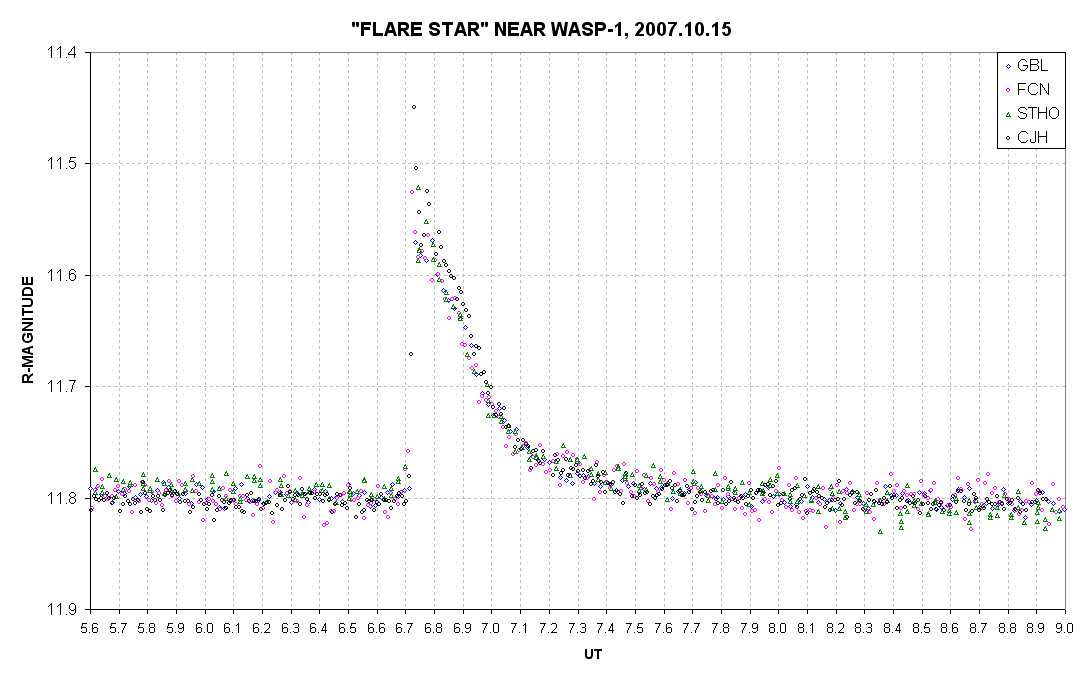

The flare star was fading at ~2 mmag/hour before and after
the flare event. When the brightening occurred (06.72 UT) it was abrupt
(<30 sec) and reached ~0.34 mag. The fade had an exponential decay
time of ~12 minutes. All 4 observers show the same shape flare event.
FLARE EVENTS
2007.10.15 Flare Event
So far all R-band observations of the flare event of 2007.10.15 show a brightening of ~0.25 mag.
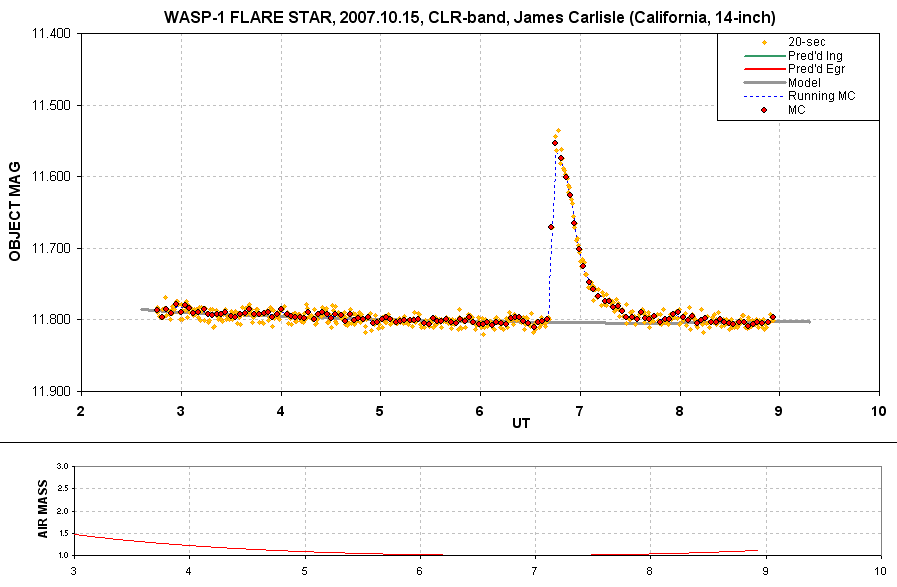
Excellent LC using a 14-inch Meade RCX400.
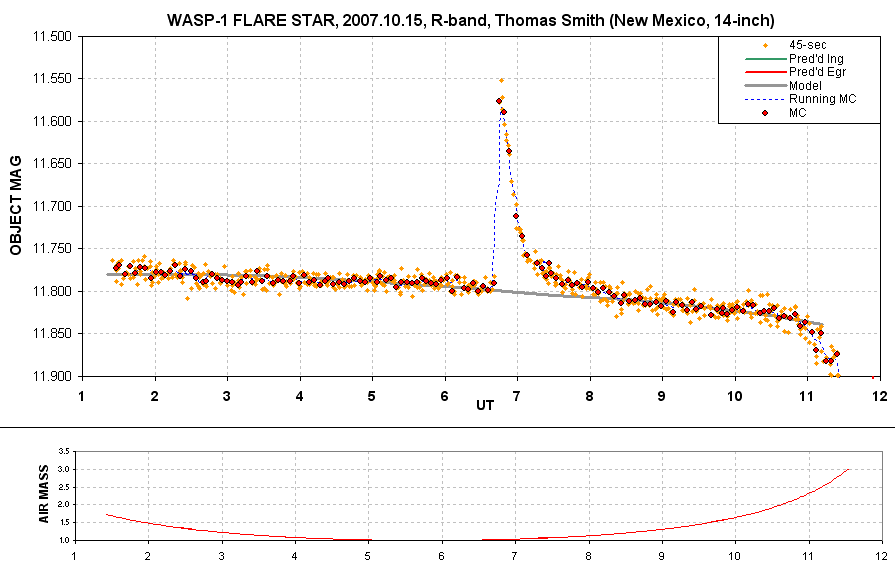
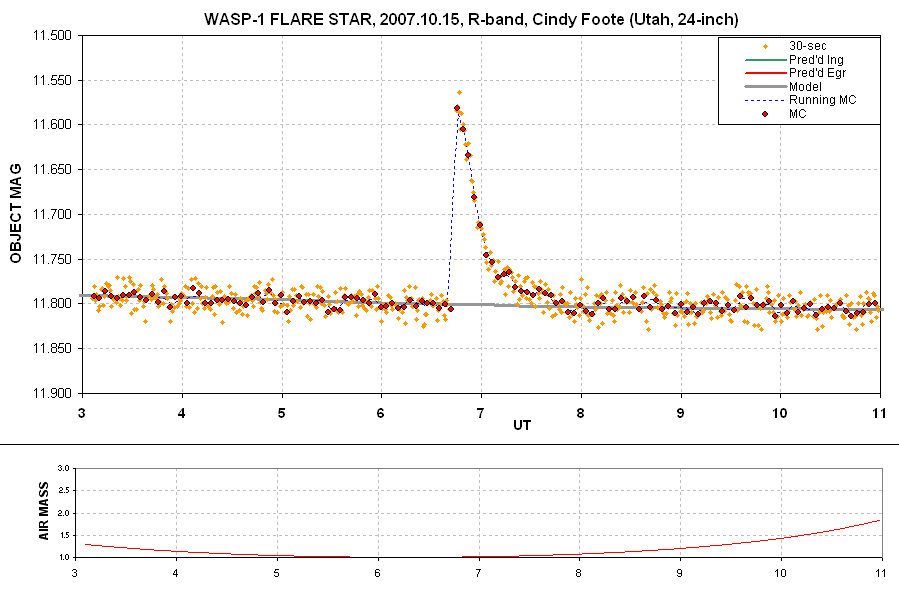


Zoom of previous graph showing stability of nearby check stars while
the flare star is slowly fading throughout the brief flare event.
NON-FLARE OBSERVATIONS
2007.10.20 No Flare Event
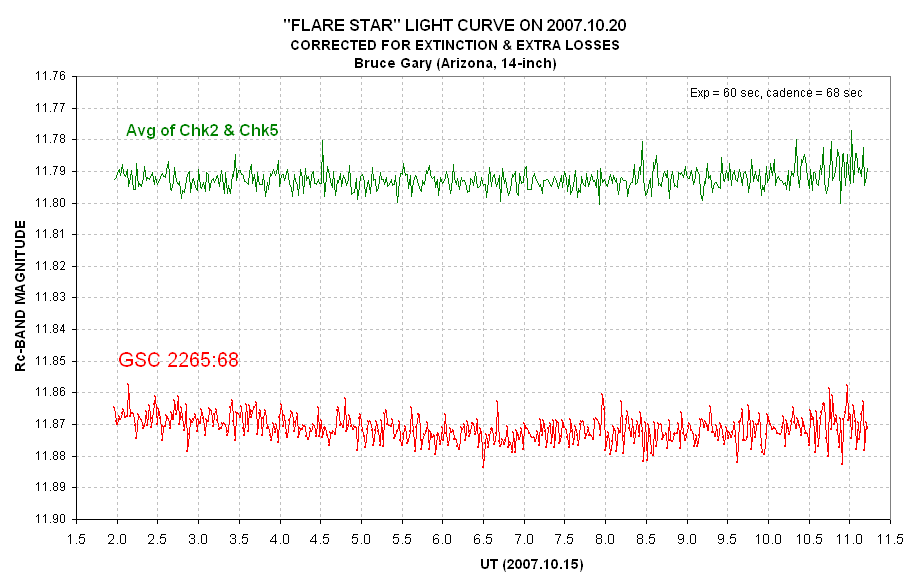
2007.10.18 No Flare Event

FINDER CHART

Cindy Foote's finder chart showing star mags & colors. Star #9 is the flare star.
This site opened: October 21,
2007. Last Update: October 23,
2007 (UT)











